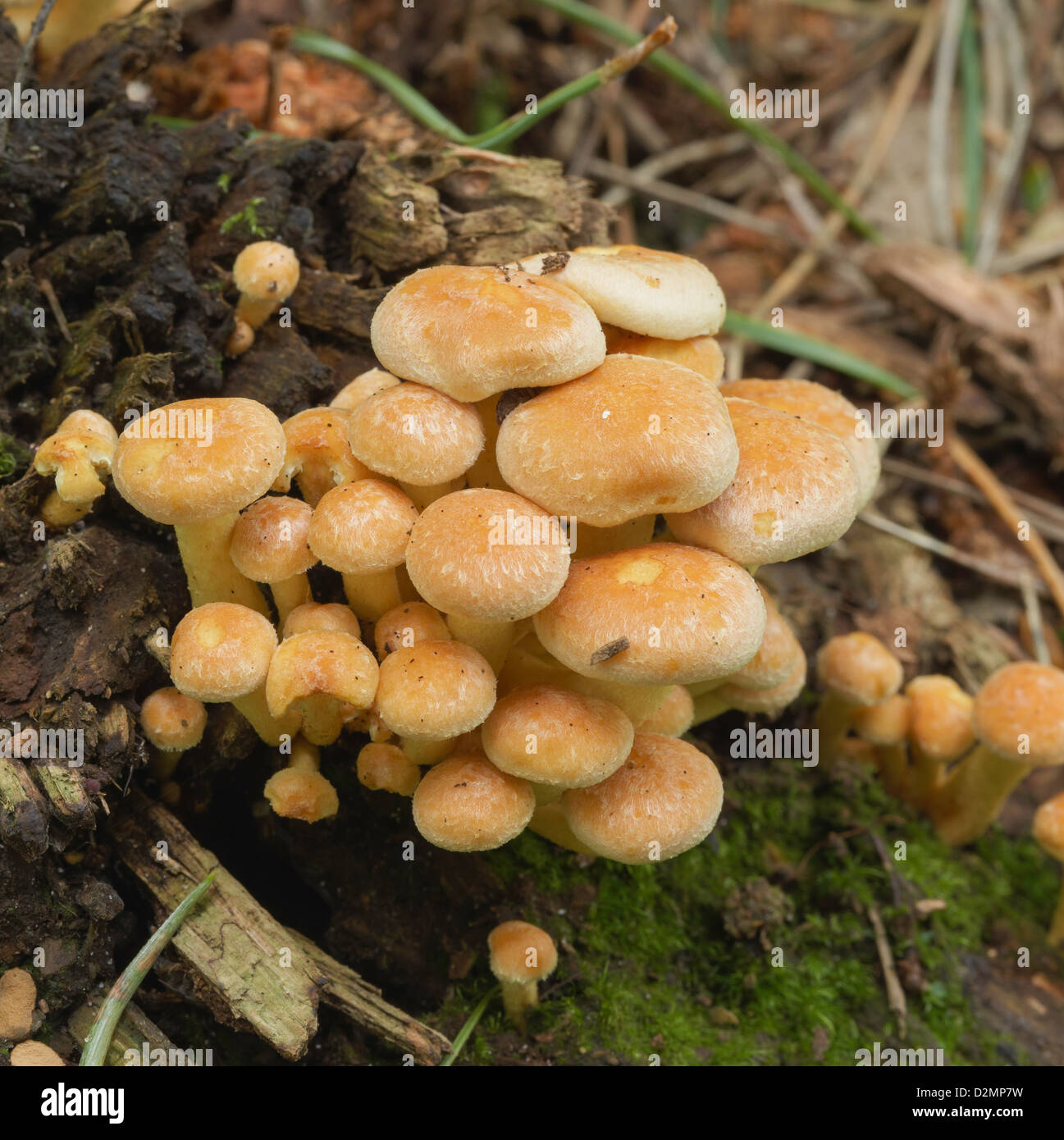Sulphur tuft Hypholoma fasciculare growing on a tree stump

Image details
Contributor:
Emmanuel Kyndt / Alamy Stock PhotoImage ID:
D2MP7WFile size:
31.6 MB (1.3 MB Compressed download)Releases:
Model - no | Property - noDo I need a release?Dimensions:
3322 x 3328 px | 28.1 x 28.2 cm | 11.1 x 11.1 inches | 300dpiDate taken:
5 September 2010More information:
A mushroom is the fleshy, spore-bearing fruiting body of a fungus, typically produced above ground on soil or on its food source. Like all fungi, mushrooms are not plants and do not undergo photosynthesis. The standard for the name 'mushroom’ is the cultivated white button mushroom, Agaricus bisporus; hence the word "mushroom" is most often applied to those fungi ( Basidomycota and Agaricomyetes) that have a stem (stipe), a cap (pileus), and gills (lamella) or pores on the underside of the cap. 'Mushroom' describes a variety of gilled fungi, with or without stems, and the term is used even more generally to describe both the fleshy fruiting bodies of some Ascomycota and the woody or leathery fruiting bodies of some Basidiomycota depending upon the context of the word. Forms deviating from the standard structure usually have more specific names, such as 'puffball', 'stinkhorn' and 'morel '. This photo is of a cluster of Hypholoma fasciculare found in West Flanders, Belgium. Hypholoma fasciculare commonly known as the sulphur tuft or clustered woodlover are a common woodland mushroom often in evidence when hardly any other mushrooms are to be found. It is more frequently found on decaying deciduous wood due to the lower lignin content of this wood relative to coniferous wood. This small gill fungus grows prolifically in large clumps on stumps, dead roots or rotting trunks of broadleaved trees. Hypholoma fasciculare is widespread and abundant in northern Europe and North America and can appear anytime from spring to autumn. The Sulphur Tuft is bitter and poisonous; consuming it can cause vomiting, diarrhoea and convulsions. The hemispherical cap can reach 6cm in diameter. It is smooth and sulphur yellow with an orange-brown centre and whitish margin. The crowded gills are initially yellow but darken to a distinctive green colour as the blackish spores develop on the yellow flesh. It has a purple brown spore print. The stipe is up to 10cm tall and 1cm wide, light